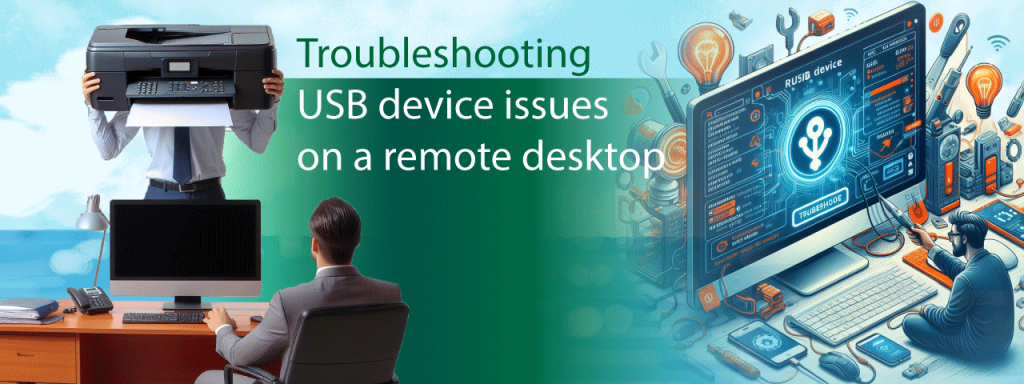Remote desktops are invaluable for enabling you to access your work computer from almost anywhere. However, what happens if, during a remote connection, your dependable USB printer, scanner, or external disk starts to act strangely? This tutorial explores the common causes of remote desktop USB device issues on remote desktops. We’ll provide you with the knowledge and skills to six USB connection remote desktop quickly.
Common USB Device Issues in Remote Desktop Environments
A remote desktop is a great option to access your work computer from anywhere. But what about those indispensable USB gadgets, such as external disks, printers, and scanners? Unfortunately, there might be some difficulties while utilizing USB devices with RDP. Let’s look at some typical issues you can run into:
Remote desktop USB not recognized. It might happen because of driver incompatibility between the remote machine’s operating system and the device’s.
Using a USB device remotely may cause slowness or sporadic connectivity issues. Network restrictions are frequently the source of this. High latency or variations in bandwidth might impede the data transfer between the local device and the distant session.
Your device may not work properly on the remote desktop, even if it is detected. The RDP environment’s software restrictions may be the cause of this. For instance, many sophisticated functions of cameras or scanners may not be available at a distance.
Moreover, remember that software drivers are necessary for RDP to interact with USB devices. The device won’t work correctly if the remote device has an incompatible version of the driver or doesn’t have the correct one. USB data is sent using remote desktop technology over a network. Latency and network bandwidth are important factors. Excessive latency might result in response delays, and insufficient bandwidth can cause lag and connection dropouts.
Step-by-Step Troubleshooting Guide
So, how can you troubleshoot USB over RDP problems? While it’s not possible to foresee all the issues, let’s see how you can guard yourself from the most common ones:
Take heed of these procedures if you want to efficiently identify and address problems encountered on remote desktops.
Best Practices for Preventing USB Device Issues
Now, you’re probably wondering what are the best procedures for USB device redirection RDP troubleshooting? The following are essential procedures to reduce problems, particularly during remote desktop sessions:
These are the most common practices that might help you with solving USB problems in remote sessions. If you need expert help, you might consider contacting the HighFigure professionals to get expert advice.
To sum up, all that matters is that you must ensure your remote desktop program first supports redirection for the specific USB device you’re using. You need to evaluate those settings and ensure the RD and your local computer are running the most recent versions of the USB drivers. However, the main secret is to trust proven software development companies.
HighFigure promotes proven products that concentrate on USB. Trusting these solutions, you will have no issues. Development experts create USBoNET solutions that are compatible with various drivers and have a simple design, so you will not be overwhelmed even if you are new to the world of technology. Ultimately, your best option is to be proactive. You may reduce disruptions and guarantee a seamless remote desktop experience if you adhere to recommended procedures.
